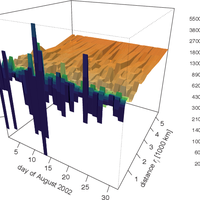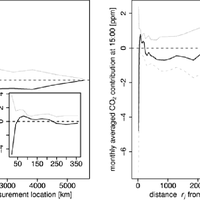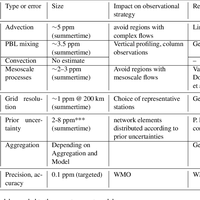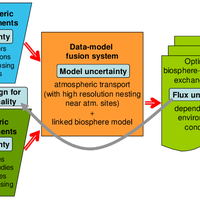Abstract
Estimating carbon exchange at regional scales is paramount to understanding feedbacks between climate and the carbon cycle, but also to verifying climate change mitigation such as emission reductions and strategies compensating for emissions such as carbon sequestration. This paper discusses evidence for a number of important shortcomings of current generation modelling frameworks designed to provide regional scale budgets from atmospheric observations. Current top-down and bottom-up approaches targeted at deriving consistent regional scale carbon exchange estimates for biospheric and anthropogenic sources and sinks are hampered by a number of issues: we show that top-down constraints using point measurements made from tall towers, although sensitive to larger spatial scales, are however influenced by local areas much more strongly than previously thought. On the other hand, classical bottom-up approaches using process information collected at the local scale, such as from eddy covariance data, need up-scaling and validation on larger scales. We therefore argue for a combination of both approaches, implicitly providing the important local scale information for the top-down constraint, and providing the atmospheric constraint for up-scaling of flux measurements. Combining these data streams necessitates quantifying their respective representation errors, which are discussed. The impact of these findings on future network design is highlighted, and some recommendations are given. © Author(s) 2009.
Figures
Register to see more suggestions
Mendeley helps you to discover research relevant for your work.
Cite
CITATION STYLE
Gerbig, C., Dolman, A. J., & Heimann, M. (2009). On observational and modelling strategies targeted at regional carbon exchange over continents. Biogeosciences, 6(10), 1949–1959. https://doi.org/10.5194/bg-6-1949-2009





